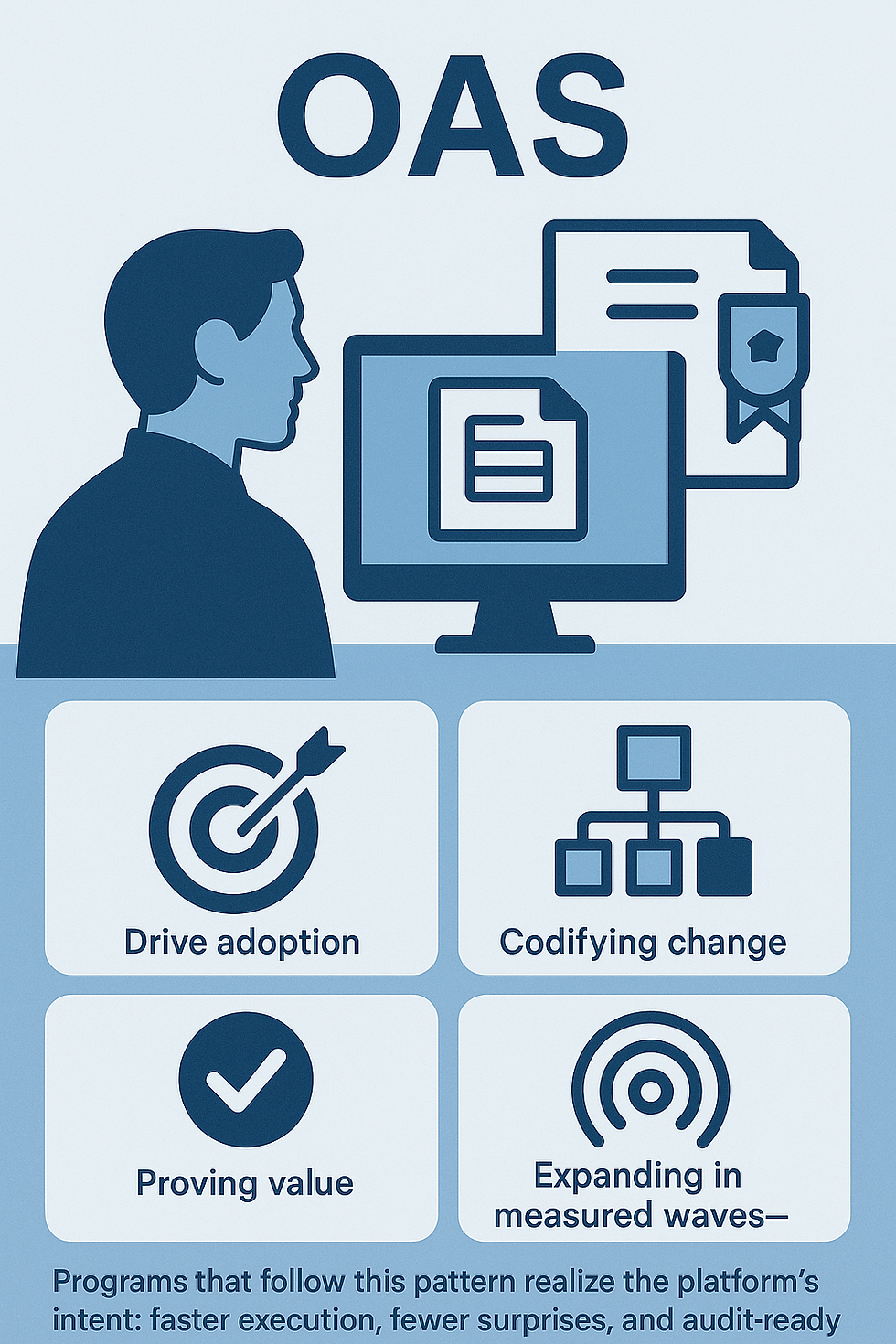Contract Modification Workflows
- Mark Beninger
- Mar 31
- 3 min read
In today’s fast-paced and ever-evolving procurement landscape, organizations require
agile and efficient systems to manage contracts and acquisitions effectively. nGAP has
introduced the robust Open Acquisition System that enhances the management of contract
modifications through streamlined workflows. This insight explores nGAP's Contract
Modification Workflows, their operational mechanics, and what sets them apart in the realm of contract management.
Overview of OAS Workflows
nGAP's Open Acquisition System is designed to simplify the procurement process for
government agencies and their contractors. The system provides a transparent and user-friendly interface that facilitates the management of contracts from initiation to completion. One of the critical features of this system is its Contract Modification Workflows, which allow for seamless adjustments to existing contracts.
Key Features of Contraction Modification Workflows
1. Streamlined Process: The modification workflows in the OAS system eliminate
unnecessary bureaucracy, enabling faster processing of contract changes. This efficiency
is particularly important in government contracting, where timelines can be stringent.
2. Automated Notifications: The system incorporates automated notifications that alert
relevant stakeholders about required actions or approvals. This feature minimizes delays
and ensures that modifications are handled promptly.
3. Real-time Collaboration: The Open Acquisition System supports real-time collaboration
among various parties involved in the contract process, including procurement officers,
legal teams, and contractors. This interconnectedness enhances communication and
reduces misunderstandings during the modification process.
4. Comprehensive Audit Trails: Every modification is tracked with a detailed audit trail,
documenting changes made, who made them, and when. This transparency is essential
for compliance and accountability, ensuring that all modifications are justifiable and
recorded.
5. User-friendly Interface: The interface is designed to be intuitive, reducing the learning
curve for new users. This accessibility allows staff to quickly adapt to the system,
promoting wider adoption and consistent usage across departments.
How the Workflows Operate
The Contract Modification Workflows operate through a series of defined steps:
1. Initiation of Modification: When a need for modification arises—due to changes in
scope, budget adjustments, or regulatory updates—the designated user initiates the
process within the OAS system.
2. Assessment and Justification: The relevant stakeholders assess the proposed
modifications. Users must provide justification for the changes, which is essential for
maintaining compliance and transparency.
3. Approval Workflow: Once the modification is proposed, it enters an approval workflow.
This may involve multiple levels of review, depending on the organization’s structure and
the nature of the modification.
4. Implementation: After receiving the necessary approvals, the modifications are
implemented. The system automatically updates all relevant documents and notifies all
stakeholders of the changes.
5. Post-Implementation Review: Finally, a review is conducted to ensure that the
modification achieves its intended purpose. This feedback loop allows for continuous
improvement in the contracting process.
Unique Aspects of OAS Workflows
What distinguishes nGAP’s Contract Modification Workflows from traditional contract
management systems is their focus on transparency, speed, and user engagement. By automating many aspects of the modification process, OAS reduces the burden on procurement professionals, allowing them to focus on strategic activities rather than administrative tasks. Moreover, the system’s emphasis on real-time collaboration and comprehensive tracking aligns with best practices in project management, fostering a culture of accountability and teamwork. The ability to quickly adapt to changes—whether due to funding adjustments or shifting project scopes—is critical for government agencies that often operate under tight constraints.
Conclusion
nGAP's Open Acquisition System Contract Modification Workflows represent a
significant advancement in the management of government contracts. By streamlining the
modification process, enhancing collaboration, and ensuring compliance, these workflows
empower organizations to adapt swiftly to changing needs while maintaining transparency and accountability. As the procurement landscape continues to evolve, systems like the Open Acquisition System are vital in supporting efficient and effective government operations.


